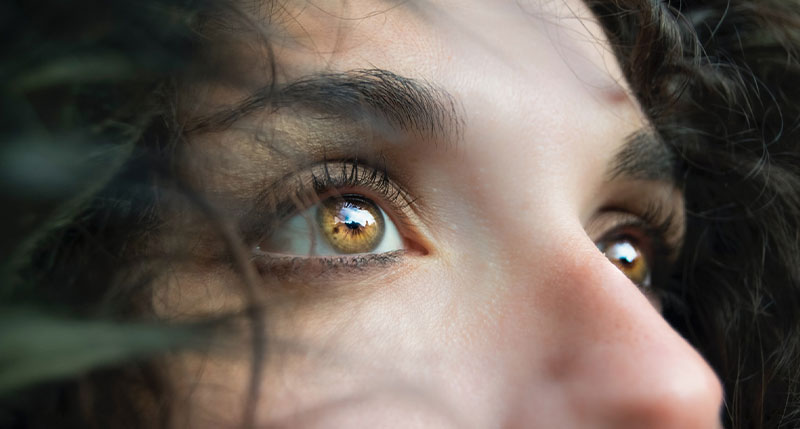According to a survey conducted by the C.S. Mott Children’s Hospital National Poll on Children’s Health at the University of Michigan Health, just half of parents know that screen time has a significant influence on their child’s eye health.
“Many parents may be unaware of both the short and long-term health risks associated with excessive screen usage, especially its effect on children’s eyes,” said Sarah Clark, co-director of the Mott Poll. “Our findings imply that some parents may have erroneous ideas of activities that influence their child’s eye health and vision, as well as how to reduce risks.” The nationally representative report was based on replies from 2,002 polled parents with children aged 3 to 18.
Research to maintain eye health
According to some experts, the combination of increased screen time and decreased outdoor time may put youngsters at a higher risk of developing myopia, or nearsightedness, which can lead to significant eye issues in the future. Nearsightedness in youngsters has risen considerably in the last 30 years.
Although research is ongoing, studies indicate that spending time outside may help prevent myopia.
“Parents should promote at least one to two hours of outdoor activity every day since natural light helps eye development,” Clark explained.
“Parents should enforce family norms to ensure their children have enough non-screen time during the day. This is especially crucial over the summer, when youngsters are not in school and may have less organised free time.”
Some study has also shown links between working up close – such as reading or using a tablet – and an increased risk of myopia.
“It’s critical to consider myopia concerns for children since children with this problem frequently get more nearsighted over time,” said Olivia Killeen, M.D., an ophthalmologist at U-M Health Kellogg Eye Center who consulted on the paper. “The age at which myopia develops is the most important predictor of severe myopia later in life.”
Using eyeglasses to reduce hazards to children’s vision
Another ignored aspect of eye health is safeguarding children’s eyes from direct sunlight.
Wearing sunglasses when outside has a minor influence on children’s eyesight and eye health, according to less than a third of parents asked, with just two in five having their child wear eyewear when outdoors.
In fact, while youngsters go outside, they should wear sunglasses or wide-brimmed hats to reduce the dangers of UV radiation damage, which can contribute to eye issues later in life, according to Clark.
“While parents frequently ensure that their children’s skin is protected with sunscreen, they may not consider protecting their children’s eyes from the sun as well,” Clark added.
Many of the parents questioned also omit procedures that assist limit eye injuries during activities that include the danger of items striking the kid’s eye at high speed or force, with fewer than a third of parents reporting that their child wears protective glasses or goggles during contact sports.
Clark advises parents to seek assistance from their child’s health professional when it comes to safe and comfortable eyewear for activities such as lacrosse, tennis, baseball and softball, and basketball.
However, the majority of parents asked claim their children and teenagers use protective glasses or goggles while engaging in activities that offer a risk of eye injury, such as working with tools and playing shooting games like Nerf guns or paintball.
Following screen time, the most prevalent factors identified by parents as influencing children’s eyesight and eye health are reading in low light, how close children sit to the TV/screen, food, and blue light from displays.
“Some parents may still follow recommendations from previous generations about safeguarding their children’s eyes,” Clark added. “While reading in low light or sitting near to the TV might induce eye strain or weariness, they will not cause lasting damage or long-term eye difficulties.”
Only about a third of parents report their children wear blue-light-blocking eyewear. While blue light does not harm the eyes, it can disrupt circadian cycles and make it difficult for youngsters to sleep.
Experts recommend that youngsters cease using blue light screens at least one hour before going to bed.
Regular eye examinations to spot issues early
Four out of every five parents say their child got a vision test during a visit to the paediatrician or family doctor, and more than a fourth say their child was checked at school or daycare.
The majority of parents claim that their child’s health insurance covers the entire or partial cost of trips to an eye doctor, while 9% say they are not covered and 7% are unclear. Parents who claim no coverage for eye doctor visits are less likely to indicate their child has seen an eye doctor in the recent two years than parents who report full or partial coverage.
Also Read: People with exceptionally low BMI are not more active they are simply less hungry
One in every seven parents reports that their child has not had a vision test or visited an eye doctor in the last two years.
“Children should get vision exams every two years to ensure their eyes are growing appropriately,” Clark added. “It is critical to recognise and treat vision problems as early as possible since misdiagnosed abnormalities can progress to significant eye illnesses, including irreversible vision loss, in the future.”
Follow Medically Speaking on Twitter Instagram Facebook





